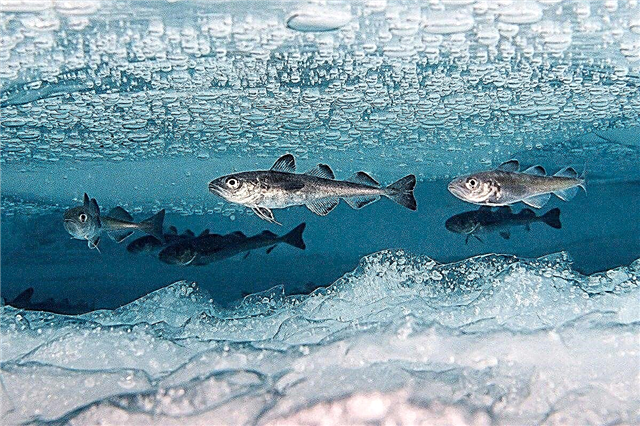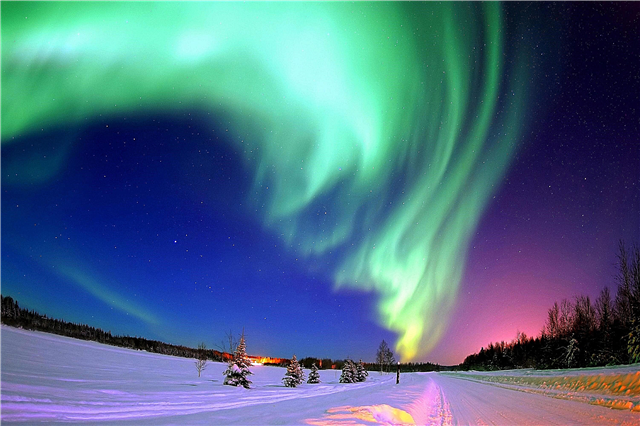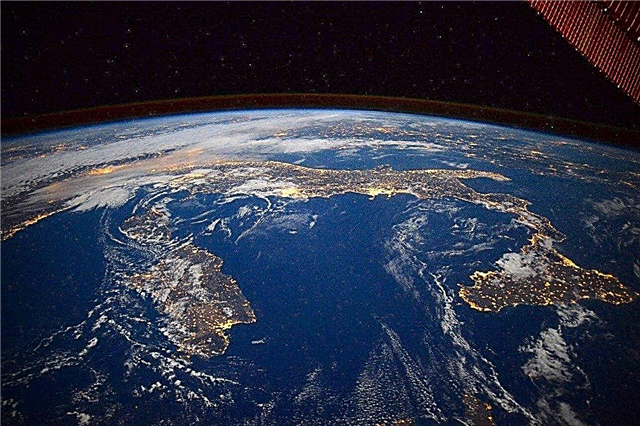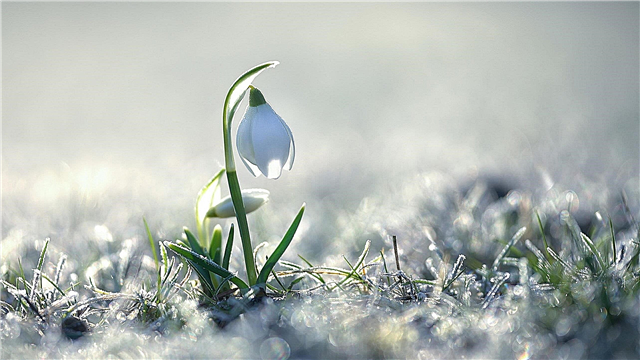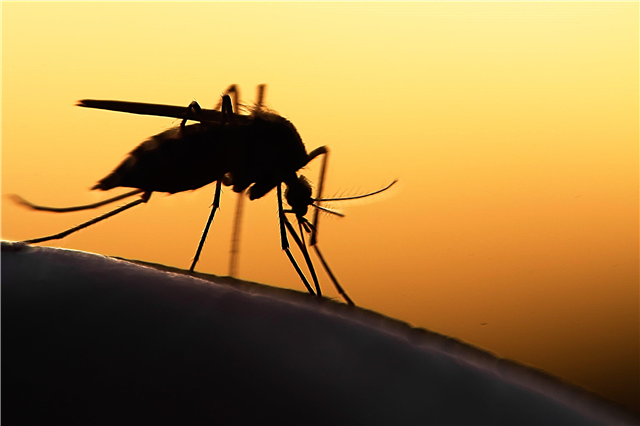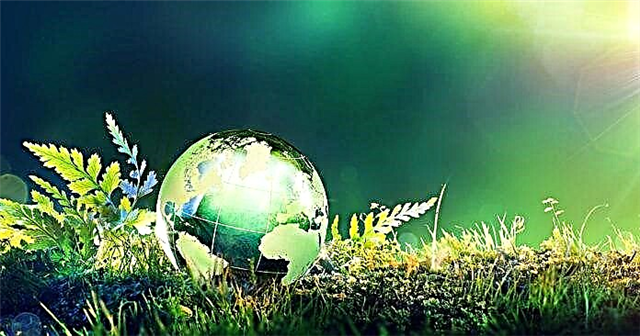
What is an ecosystem?
An ecosystem is a system that combines living organisms and their interaction between themselves and nature. In the ecosystem, absolutely everything is connected, from representatives of wildlife, ending with inanimate.
The essence of the ecosystem
Each organism is important in its own way; it occupies a certain place. On the example of the ecosystem of small lakes, one can consider each type of living creature, from bacteria to multicellular plants and animals. Each organism cannot live without separate objects of inanimate nature; everything needs air, the sun and water. Even the mineral composition of water directly affects the development of organisms in lakes.
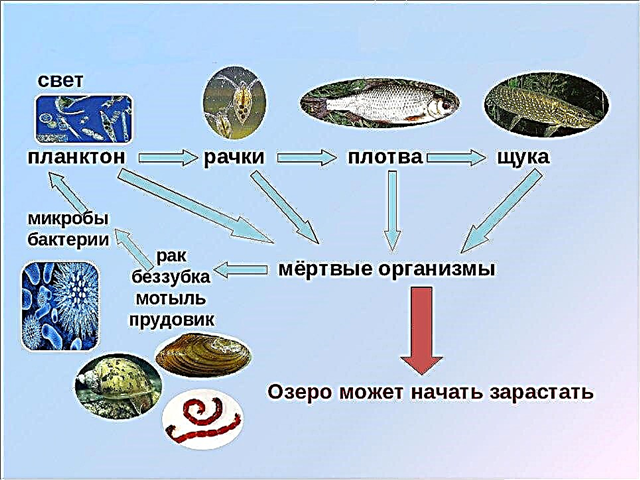
Always, when an ecosystem is affected by organisms unusual for it, indelible consequences can occur. New organisms in one way or another distort the natural order of things, upset the natural balance, harming the environment. So, for example, Australia can be understood that after the settlement of dogs, cats and foxes on the island, various marsupials were exterminated.
Biotic members of any ecosystem are directly dependent on each other. We can say that if one member of the ecosystem disappears, then the whole system will suffer significant changes. In the case when living beings lack light, water, air, they begin to die out gradually, animals cannot live without plants, and organisms that directly depend on them begin to die out without animals.
In the natural nature of the system operate according to a single mechanism. Each part of the system depends on the other, works simultaneously with it. To maintain natural balance, a person must protect every living creature. The destruction of ecological systems occurs through the fault of man and natural disasters.
Ecosystem and biogeocenosis
It is impossible to consider as synonyms the concepts of ecosystem and biogeocenosis. They are close in meaning. Biogeocenosis is the same ecosystem limited by phytocenosis. Phytocenosis is a community of plants, as well as a set of organisms that exist together on a single plot of the earth's surface. An ecosystem can generalize all concepts. Each biogeocenosis is an ecosystem, but not every system can be a biogeocenosis.
Types of ecosystems
Ecosystems can be of different sizes, exist in different spaces, both large and small. Your ecosystem can be under rocks in small bodies of water. Ecological systems can cover vast areas - forests, deserts, steppes. Technically, the entire planet Earth is one large ecosystem common to all creatures living in it.
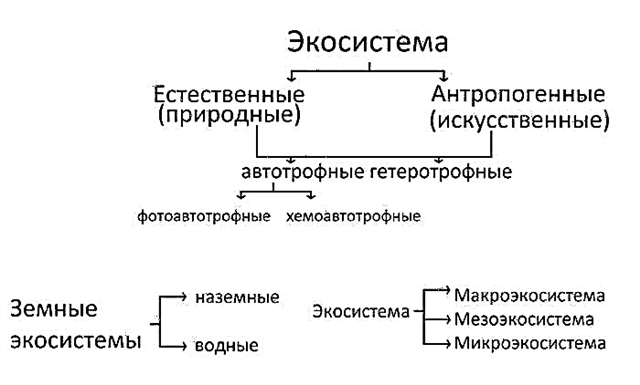
Types of ecosystems by scale
Ecosystems are:
- Microsystems - Small ecological systems like small ponds, puddles, individual trees and so on.
- Mesoecosystems represent ecological systems covering large areas.
- Biomes (macroecosystems) - a huge ecological system, as well as a set of ecosystems, the factors of which are similar to each other. There are vast tropical forests in which millions of animals are located, objects of inanimate nature like lakes.

No ecosystem has clearly defined boundaries. Often, each system is separated by a specific barrier: deserts, archipelagos, rivers, and so on. Since there are no clear boundaries, ecological systems smoothly pass one into another. That is why several small ecosystems can be combined in lakes at the same time. At the same time, each ecosystem will have unique characteristics that distinguish it from others. Similar mixtures of ecosystems are called ecotones.
Types of ecosystems depending on the type of occurrence
There are certain ecosystems, they can be distinguished by the type of appearance.They are most often of natural origin, but there are also artificially created ones.
- Natural ecosystem - created by nature. It can include forests, lakes, seas and so on.
- Artificial ecosystems man himself creates: various gardens, gardens, etc.
Types of Ecosystems
There are two types: water, land. The remaining subtypes of ecosystems belong to one of these groups.
Terrestrial ecosystems
Distributed throughout the earth, found in all corners of the planet, are unique, as, for example, in Australia:
Forest ecosystems
A large number of living organisms located in relatively small spaces live here. The population density of forests is extremely high, however, even the most minor changes can greatly change the natural balance on the ground. In such ecosystems, the mass of representatives of the animal and plant world. Forest ecological systems are divided into:
- Rainforestswhere annual rainfall occurs. The main features of tropical forests are: dense vegetation with a predominance of tall trees that are located at different heights. In such territories, many living organisms live, where many animals take refuge.
- Deciduous rainforestin which, in addition to various types of tropical trees, shrubs grow. Deciduous tropics can be found in all corners of the planet, they live not only a mass of plants, but also a variety of animals.
- Temperate evergreen forestsin which there are not many trees. In such areas, evergreens predominate, annually gradually updating their foliage.
- Deciduous forestsgrowing in regions with moderate humidity, where there is enough rainfall for life. In winter, trees drop leaves, renewing cover in spring time.
- Taigagrowing directly near the tundra. It contains evergreen conifers, the temperature is most often negative, and the soils are extremely acidic. In summer, many migratory species of birds fly here, insects wake up, the life of the rest of the taiga animals is in full swing.
Example: mixed forest ecosystem
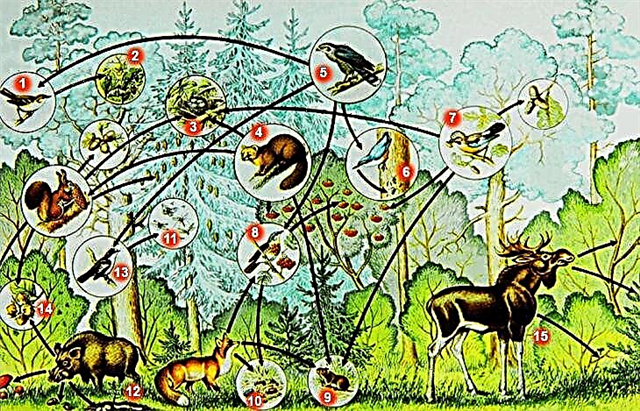
Producers are represented by a variety of trees (oaks, spruce, pine, aspen, birch, etc.), shrubs (14) and herbs (sedge, hairy, starlet, blueberries, etc.). Consumers are represented by numerous insects (2). Primary forest products are consumed by forest voles (9) and mice, squirrels, moose (15), wild boars (12), deer, and from birds - crossbills, finches, jays (7). The second tier of consumers, those that consume animals, is represented by spiders, predatory bugs - ground beetles, wasps, ants (10), blood-sucking mosquitoes (11). Of the mammals - insectivorous shrews, badger, fox, marten (4), bear. Of the birds - insectivorous woodpeckers, thrushes (8), scythe (1), flycatchers (13), nuthatch (6), as well as birds of prey - hawks (5) and owls.
Desert ecosystem
There are not many animals, plants. The systems themselves are located next to semi-desert areas, occupying approximately 17% of the total land area. The temperature is very high, there is little water, and there is too much light.
Meadow ecosystem
Meadows can be found all over the world. On their territories mainly grow herbs, a few trees, shrubs. In the meadows animals graze both insectivorous and herbivorous.
Three ecological systems of meadows can be distinguished
- Savannahs, which are tropical meadows with a dry season, trees and shrubs separately grow in the savannah. Such plants are the main source of food for herbivores hunted by predators.
- Prairies, representing moderate grassy meadows, in which there are practically no large shrubs, trees. Forbs are found there. The climate is rather arid.
- Steppe meadowswhere short vegetation can be found around. Steppe territories are often found near semi-deserts. Trees can be found very rarely, usually near rivers, streams. Mostly small animals live in the steppes.
Mountain ecosystems
In the mountains you can see the diversity of habitats in which many animals live, plants grow. On the tops of the mountains there is mostly a harsh climate in which only alpine plants survive. Mountain animals often have a thick hide that protects them from the cold. Coniferous trees grow on the lower slopes of the mountains.
Aquatic ecosystems
Aquatic ecological systems are located only in the aquatic environment. Each water body can be attributed to water media, despite its size. A similar system combines flora, fauna, water properties like salinity of water. By type, aquatic ecosystems are divided into several species.
Marine ecosystems
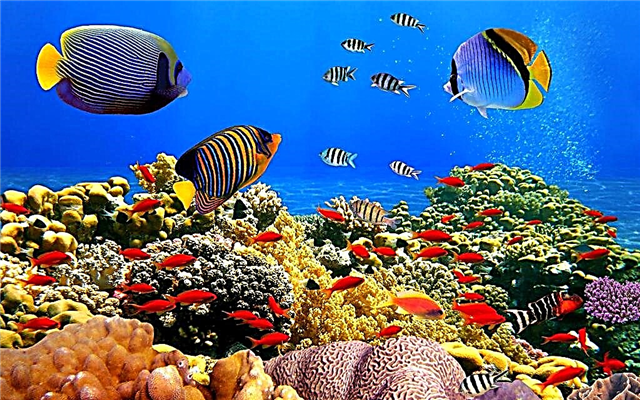
Large ecosystems can be considered marine. They occupy more than 70% of the planet. They contain more than 97% of the Earth’s water reserves. Sea water contains a mass of minerals as well as salts. Ecosystems of the seas are divided into:
- Oceanic - a relatively small part of the oceans located on the continental shelf;
- Profundal part - not saturated with sunlight, located at great depths;
- Bental the part where bottom living organisms live;
- Tidal zone;
- Estuary zone;
- Coral Areas;
- Salt marshes;
- Hydrothermal ventsin which many chemosynthetic bacteria create a food base for other creatures.
In marine ecosystems there are a lot of organisms inherent only to them: corals, various types of algae, marine organisms.
Freshwater ecosystems
Freshwater ecosystems represent a small part of the earth's surface - less than 1%. They contain 0.009% of the total water. There are three types of freshwater ecosystems:
- Standingin which the course is completely absent. These include pools, ponds and lakes.
- Flowingwhose waters are moving fast. These include streams, rivers.
- Marshwhere the soil is constantly flooded.
Freshwater ecosystems are habitats for reptiles, amphibians, and about 40% of the world's fish species. Flowing ecosystems contain high levels of oxygen, supporting many living species. There are much more organisms than in stagnant waters.
Closed ecosystem
In a closed ecosystem, there is completely no metabolism with the external environment.
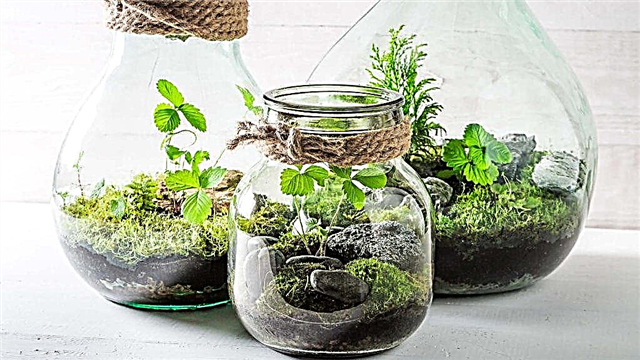
Experience with a garden in a bottle of David Latimer
In 1960, the British David Latimer decided to conduct an unusual experiment - he planted a small garden in a bottle without watering it. The garden has formed its own closed ecological system, where oxygen does not enter.
David put very hardy tradescans inside the bottle, which gradually filled a volume of 40 liters. They survived on recyclables — air, decomposition products, and water.
The bottle all the time stood about 2 meters from the window. So the plant received a certain amount of sunlight, sprouting in the direction of the sun. Periodically, for uniform growth, David turned it.
Latimer said that he had never pruned a plant, but it looked as if it had specially grown to the limits of the container.
How do bottled gardens work?
Such gardens in closed spaces work as an ecosystem because tightness creates a separate ecological system where living organisms live, develop and multiply. Plants use photosynthesis, thereby utilizing nutrients.
The only factor used by such ecosystems from the environment is sunlight, without which photosynthesis is impossible. The light falling on the leaves of the plant is absorbed by the proteins contained in the leaves.Some of the energy of the sun remains in storage in the form of ATP molecules.
The rest of the world is used to process water that is absorbed from the soil by the roots of the plant. The process of photosynthesis is the opposite of cellular respiration characteristic of other organisms.
The ecosystem also uses cellular respiration in its activities, destroying recycled materials. Soil bacteria are involved in this part of the processes, processing waste with the release of carbon dioxide into the atmosphere. The plant reuses this gas. The circle closes.
At night, the plant itself uses cellular respiration to support life, while it breaks down nutrients stored during the day. The water cycle in the garden behind the glass is also fully automated. Water is absorbed by the roots of the plant, during transpiration it is released into the environment and falls into the leaves and soil as condensate. The cycle also starts anew.
Biosphere 2

Around the end of the 80s, a project called “Biosphere-2” was launched. The planet itself is considered Biosphere-1. Its purpose was to find out the possibility of reproduction of the terrestrial ecosystem. For this purpose, a closed environment of 12,000 m2 was built, located in the desert of Sonora, Arizona.
The idea of the project was to check whether people can survive in space for a long time in an artificially created terrestrial ecosystem. 8 volunteers ventured into the territory of Biosphere-2 in 1991. People had to live in this place for two years, completely divorced from civilization. Contact with the outside world would be maintained through a computer.
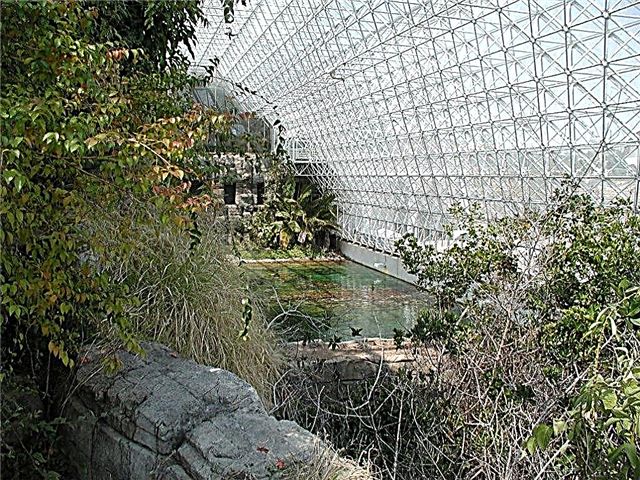
The experiment was not successful from the very beginning - one of the volunteers was injured and went home. About a year passed, the amount of oxygen began to decrease gradually, so it had to be pumped artificially. It is impossible to talk about the purity of an experiment under such conditions.
The next problem that arose in Biosphere-2 is the inability to grow products. People lost their cohesion, divided into two groups. Scientists began to seriously fear for the life and health of the subjects, so the experiment was stopped.
The second launch of the experiment occurred in 1994. Some problems that arose in the first group were resolved, however, the group members had serious disagreements, the experiment had to be stopped again, but after six months. Now the project is wholly owned by the University of Arizona, which resumed experiments in 2011.
The structure, components, ecosystem factors
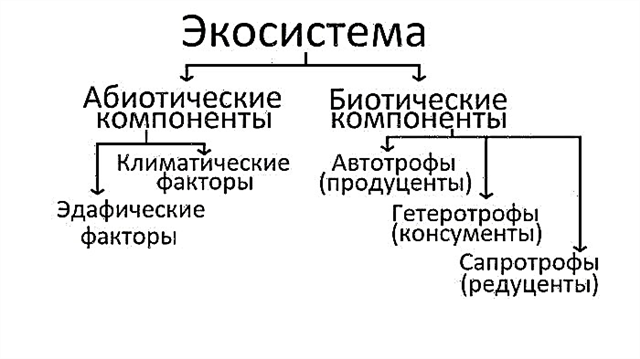
All ecosystem components are closely related. Absolutely every system consists of several components.
Abiotic components
Abiotic components are in no way interacting external factors. They directly affect behavioral characteristics, interaction, life of creatures in the vast ecosystems. They are represented by two types:
- temperature;
- edaphic factors.
Abiotic components play an important role in life, the development of living organisms. Plants need sunlight, without oxygen no living creature exists, nor without water.
Biotic components
These are wildlife components that fall into three types:
- producers (create organic matter, process carbon dioxide, energy);
- consumers (animals);
- reducers (recycle waste).
When the circle is completed, the processes begin anew.
Ecosystem levels
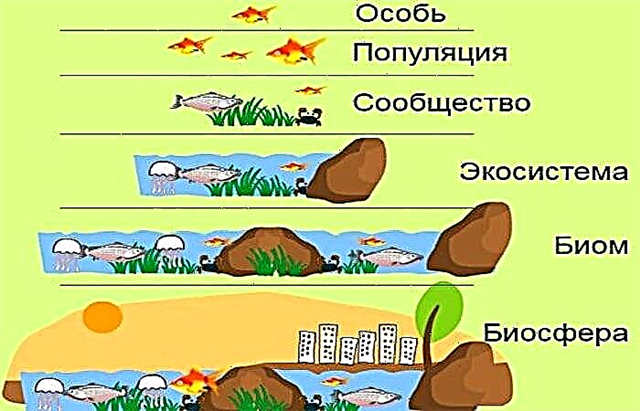
Ecosystems are characterized by the following levels:
- An individual (any living creature).
- Population (a group of creatures of a certain species in a certain territory).
- Community (the totality of all creatures on the ground).
- Ecosystem (a set of natural factors).
- Biosphere (the totality of each ecosystem of the planet).
The food chain and energy in the ecosystem
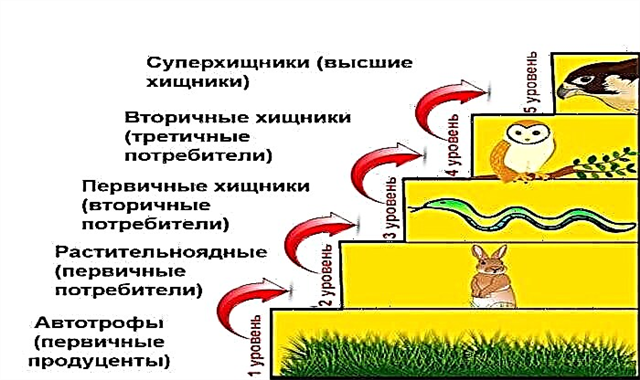
Everyone needs energy for life and development. Living organisms eat differently.So, plants receive the necessary nutrients from the soil and from the sun. Animals can eat plants or other animals. This ratio is commonly called the food chain.
Do not confuse the trophic chain with the food chain - these are two different concepts. The trophic chain is the totality of all food chains; it has an extremely complex structure. Energy is gradually transferred from one element of the chain to another, some part is used for life, so it can not move on. In short circuits, energy is stored more. In the end, energy is completely absorbed by the outside world.

